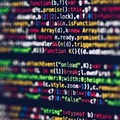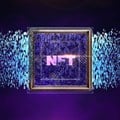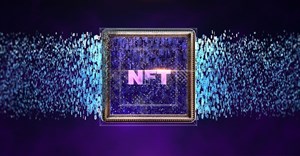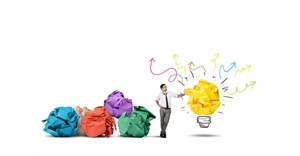Trending



 Clothing brand Curve Gear opens new store in Tygervalley CentreLindsey Schutters
Clothing brand Curve Gear opens new store in Tygervalley CentreLindsey Schutters Sabre EMEA 2024 Awards: Razor PR, Retroviral top SA agenciesDanette Breitenbach
Sabre EMEA 2024 Awards: Razor PR, Retroviral top SA agenciesDanette Breitenbach
Elections 2024
Jobs
- Legal Advisor Johannesburg
- Orchards Partner Gauteng
- Call Centre Manager - Debt Collection Stellenbosch
Decoding copyright and infringement of cloud-based software

Protection of computer programs
Software enjoys intellectual property protection afforded by copyright. Copyright subsists automatically in an original work that is reduced to material form (without the need for registration). The Copyright Act defines different categories of copyright works which qualify for copyright protection, including a “computer program”.
As the word suggests, copyright generally prevents copying. But what are the implications of this for software vendors, resellers and licensees, particularly when software is hosted ‘on the cloud’?
Infringement of copyright in a computer program
Conventionally, a computer program would be copied when installed onto the internal memory of a user’s computer and again reproduced, at least in part (and temporarily) in the random access memory (RAM) of the computer when used. Nowadays though, a provider creates a cloud offering by combining software applications with operating systems, drivers and other programs that enable remote access by a user. What this means is that the computer program of the application is physically present on the cloud provider’s server, which is accessed by a user via a network. The user does not gain access to this copy of the program code on the cloud server but merely gains access to the functionality of the software. Any command by the user is executed by the cloud server’s processor, which reproduces, again temporarily, bits of code from the RAM into its cache memory.
It seems, therefore, that for cloud services and web-based applications used remotely, copying of the computer program is carried out by the provider, and not by users on their computers.
Infringement of other copyright works
Unfortunately, when it comes to copyright, things are never simple. A software product is usually a complex work in that it comprises a number of different copyright works, as these are defined by our Copyright Act. While the source code constitutes a computer program, there are typically other works that come into being when running the computer program, such as those displayed or performed via a graphical user interface (GUI). These GUI works may also qualify as literary, musical or artistic works, for example.
When a user runs a web-based application, the GUI displays these other works on the user’s web browser. This is, in itself, a reproduction of the works on the user’s computer and assuming that copyright subsists in these works (for example, that they meet the requirement for originality), this copying will constitute copyright infringement, if unauthorised.
Does this mean that you need a licence to display on your computer, the works generated when you access a website? Simply, the answer is, “yes”. It is no surprise then that a 2019 European copyright directive (2019/790) provides an infringement exemption for temporary reproduction which is transient or incidental and an essential part of a technological process.
1992 Amendment of Copyright Act
Even the conclusions regarding copying of a computer program may not be as straightforward as they at first appear above, despite that there may be no actual copying of the code during the use of a web-based application.
Before computer programs were introduced into the South African Copyright Act in 1992 as a distinct category of work that is eligible for copyright protection, they were considered a species of literary work. In the case of Pastel Software (Pty) Ltd v Pink Software (Pty) Ltd and Another [1991] (heard pre the 1992 amendment), the respondent was sued for reproducing the same result as the applicant’s accounting software, including visual elements that constitute GUI works, notwithstanding that the respondent did not have access to the applicant’s source code. The Court found that it is the source code that is responsible for producing the GUI works, when used and that copying the screen layouts amounted to copying of the source code (which was regarded as a literary work at the time). Accordingly, the Court found that the respondent had infringed the applicant’s copyright in its source code, despite that the respondent did not have access to and could not have copied the applicant’s source code.
Following this line of reasoning, there is an argument that the GUI works reproduced on the computer of a user of a web-based application is a reproduction of the computer program itself, despite that the actual computer program is not copied. However, the 1992 amendment, introducing computer programs as a distinct category of work, made further provisions expressly stating that computer programs are not a literary work. The definition for “computer program” was included as
a set of instructions fixed or stored in any manner and which, when used directly or indirectly in a computer, directs its operation to bring about a result.
The definition appears to allude to the fact that a computer reproduces a computer program when executed, the consequence being to bring about a result, but that this does not mean that the result is a reproduction of the computer program. Post 1992, this seems to be the generally accepted approach. According to this, a second product that delivers the same result by means of a different computer program does not amount to a reproduction of the first computer program and is therefore not an infringing copy (although there may be infringement of the copyright subsisting in the results).
Conclusion
While copyright and copyright infringement are complicated and fraught with uncertainty, probably, at the very least, the unauthorised display of GUI works on the computer of a user of a web-based application will constitute a reproduction of those works and will amount to copyright infringement (if copyright subsists).











